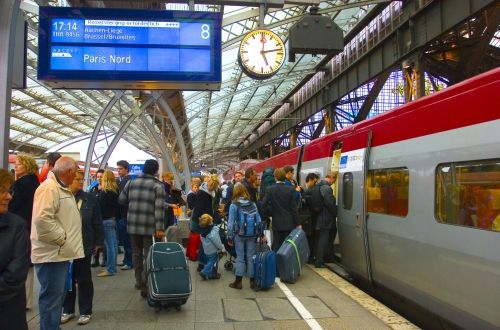The ROC consists of European operators which are members of the International Union of Railways (UIC), the Community of European Railways (CER), and European Infrastructure Managers (EIM). All agreed to the strategies outlined in Challenge 2050, which was published in February 2013, and this latest document, which was developed by a UIC-led team, is considered the next step to realise the goals of Challenge 2050's technical pillar.
Challenge 2050 is intended as "a business-led vision for the sector as a whole" and takes account of the European Commission's 2011 White Paper on Transport while identifying business challenges and making commitments to addressing them. It also supports the Shift₂Rail research initiative, a strategy it believes will provide an important focus for the development of ideas for future innovation in the railway industry.
The RTSE takes a step towards achieving these goals by providing a platform for the rail community to focus on a wide range of core points relating to improvements in technical undertakings. It will also assist operators to prepare for the challenges that will arise from the future design, construction, operation and maintenance of the railway by outlining a vision, objectives, and enabling steps for the following core elements:
• control command and communications
• infrastructure
• rolling stock
• energy supply and consumption
• information management
• railway people
• security, and
• safety
The system approach outlined in the RTSE requires coordinated planning and operation of the system, with collaborative and aligned asset management. The ROC believes that the adoption of a sector-wide framework will facilitate positive changes to reliability, availability, maintainability and safety, which will be a significant step towards a cohesive railway system.
In terms of delivering on these objectives, the document states that the dynamic and successful railway sector which this strategy supports is one that "works holistically and innovates to evolve, increasing its ability to compete, to retain existing and attract new customers."
A culture of receptiveness is vital to delivering this, while it is essential that the railway industry looks outside of its own boundaries to identify the most suitable solutions. It must also better align incentives between various parties in order to increase innovation. And while the RTSE is not a research agenda, the document is positioned to guide and inspire future innovation through the EU framework programme Horizon 2020, which encompasses Shift₂Rail.
Indeed, in conclusion it states that a well-balanced, business-led programme of innovation is considered essential to deliver the goals of RTSE for the sector, with the use and availability of instruments such as Shift₂Rail, necessary to support innovation among companies and the system in general.
To view the complete RTSE click here

